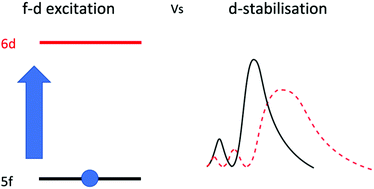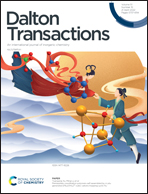Covalency in AnCl2 (An = Th–No)†
Abstract
A potential connection has previously been proposed between the emergence of unexpected covalent behaviour in various transcurium complexes and the increasing stability of the +2 oxidation state in the later members of the actinide series. We recently used computational methods to study AnCl3, finding evidence for energy degeneracy driven covalency in the later actinides, and here present a comparative study of AnCl2. The An–Cl bond lengths of the latter divide into two data sets; Th–Np, Cm, Bk and Pu, Am, Cf–No. On average the An–Cl bond length decreases for both sets but, with significant increases between Np and Pu, and between Bk and Cf, unlike the former group (Pu, Am, Cf–No)Cl2 have significantly larger lengths than the corresponding trichlorides. Using a range of Natural Bond Orbital (NBO), Natural Resonance Theory (NRT) and Quantum Theory of Atoms In Molecules (QTAIM) metrics, the covalency of the dichloride bonds is analysed. We find that the first group of dichlorides are similar to their trichloride counterparts and possess significantly more covalent bonds than (Pu, Am, Cf–No)Cl2. We believe this change in covalent behaviour across the series for the dichlorides is due to a decreased involvement of the 6d orbital in the later elements (as a result of the f–d excitation energy exceeding the d-stabilisation energy of the actinide ions in question). Moreover, we find that unlike the trichlorides, where the QTAIM delocalisation index indicates that covalency plateaus/moderately increases, An–Cl covalency decreases across the second half of the series for AnCl2. We attribute this difference in behaviour to a lack of significant energy degeneracy driven covalency for the dichlorides, with the energy difference between the dichlorides’ β 5f and 3p Natural Atomic Orbitals being larger than for the trichlorides. Hence we find it is not the presence of a stable +2 oxidation state, but instead the extent of energy matching between the actinide 5f orbitals and the ligand 3p, that drives covalency in the transcurium chlorides.



 Please wait while we load your content...
Please wait while we load your content...